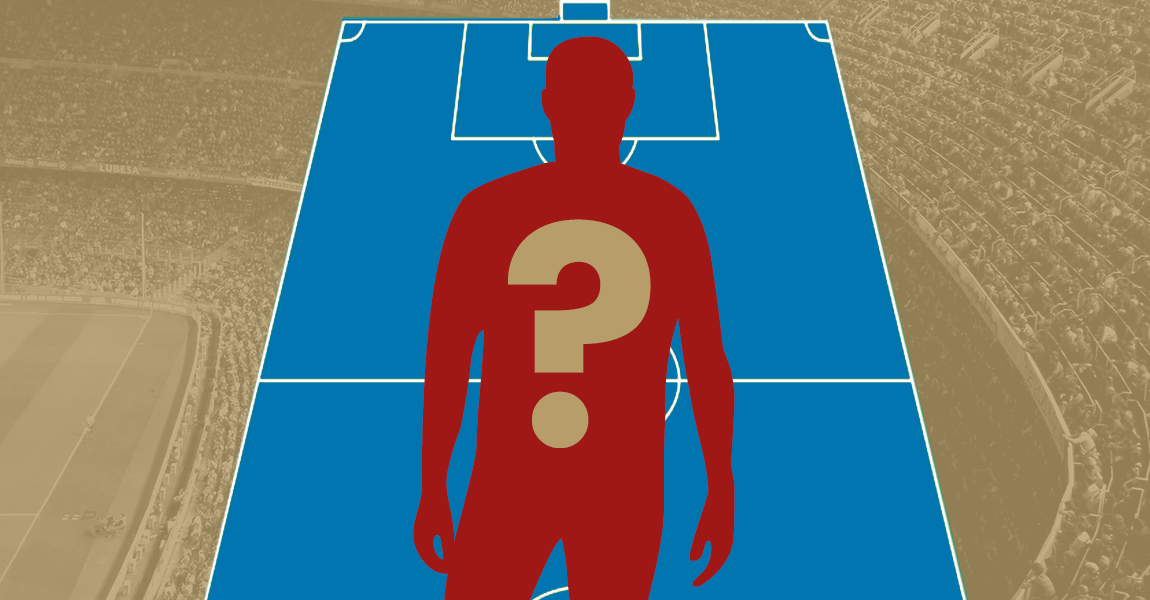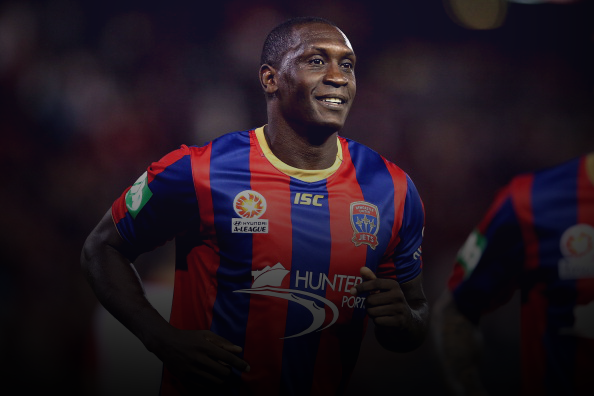As part of our World Cup coverage, we have interviewed journalists, correspondents, experts & writers representing each of the 32 countries to give you, the readers, a better understanding of the 32 nations participating in the 2014 FIFA World Cup. Here are the list of interviewees.

For this interview, focusing on Australia, we spoke to Kate Cohen. Award winning writer for the Guardian (Australia), FourFourTwo, Liverpool Football Club & Leopold Method. Follow her on Twitter @Kate_LFC_SFC
Ange Postecoglou was appointed after 6-0 defeats to Brazil and France and his long term goal was to revive the squad. Will Australia’s performance in Brazil be glossed over, with the intention on the 2018 World Cup in Russia?
For non-Australian readers, there is a long, complex back story behind what will happen in Brazil. Holger Osieck, the previous manager, was not liked by the fan base, particularly in the latter stages of his tenure. Many felt Socceroos’ style of play under Osieck was negative and unattractive and also disliked the fact he failed to integrate younger players into the set up.
Despite these problems, Osieck qualified for Brazil, but the 6-0 thrashing meant fans got their way and #HolgerOut became a reality.
Ange Postecoglou, a long term appointment, is the man chosen to regenerate the squad (which he has already well and truly done), move towards a more entertaining, attacking style of football and, ultimately, deliver results. Considering the group Australia are in – against Spain, Chile and the Netherlands – it is correct to say that Brazil 2014 is not his main objective, but that doesn’t mean performance will be glossed over.
Postecoglou wants to prove that Australia can match it against the best and, with a young squad, playing good, fearless, attacking football will be the main focus. Postecoglou will be looking beyond Brazil 2014, but not as far as Russia 2018. Australia hosts the Asian Cup in January 2015 and will be expected to win their first international trophy (outside of Oceania); Postecoglou will be looking to give the next generation much needed experience in time for that.
Postecoglou’s squad is completely different to before and contains a lot of domestic-based players who are perhaps not well known overseas. Is there a risk of making so many changes before a World Cup? Which of the lesser known A-League stars is the one to watch this World Cup? Also, was the emphasis on A-League players a deliberate attempt to promote the domestic league, or a paucity of options?
Looking at the Australian squad, long term injuries aside, there are no names that stand out and scream “I can’t believe they didn’t make it” (… apart from maybe Kile Kennedy). Unlike the ‘Golden Generation’ of Germany 2006, Australia has very few players playing regularly in top European leagues. Combine that with Postecoglou’s faith in the A-League and you get this squad. The preliminary squad contains eight A-League players, and 22 players (of the 30) have at some point started or played a portion of their careers in the A-League.
The four ‘unknown’ or lesser known A-League players who have legitimate chances of being in the starting XI are Ivan Franjic (right fullback), Matthew Spiranovic (centre back), Mark Milligan (centre midfield) and Tom Rogic (Number 10). Franjic shone under Postecoglou during his time at Brisbane Roar and has continued that good form; this gives him the chance to start ahead of Luke Wilkshire at right back. Tom Rogic is the big x-factor player – an incredibly talented, direct number 10 who was on loan at Melbourne Victory (from Celtic) during the back end of the season, but whether he starts is not a guarantee.
How much will Bayer Leverkusen’s Robbie Kruse be missed? Which one of the current players do you see replacing his role in the squad?
Robbie Kruse played a pivotal role in Australia’s qualification for Brazil and was really the only ‘young’ (read: mid-20s) player to be a regular under Osieck. A serious knee injury ruled him out and, unlike Falcao, he decided not to accelerate his recovery at the risk of his long term career. During the qualification campaign he was Australia’s most dangerous attacker from open play and is one of only two players (the other being Mile Jedinak) who are first team regulars in top European competitions. In terms of his replacement, Mathew Leckie and Ben Halloran will fight it out for the right wing spot. Leckie, who scored one in three at FSV Frankfurt in the Bundesliga 2, and Halloran, Kruse’s replacement at Fortuna Duesseldorf (also in the Bundesliga 2), are both pacey, direct wingers who started their careers in the A-League (as did Kruse).
Lucas Neill, who has been an important part of Australia’s side for the last decade, has not been called up to the World Cup squad. Even though he struggled for games, should the defender have been on the plane, purely for his experience? How much will the side miss him?
Lucas Neill’s omission surprised no one, perhaps for Lucas himself. Since leaving Galatasaray in 2011, his career has been on a downward trajectory, but you cannot fault his commitment to the Socceroos. Since leaving Turkey, Neill has played 55 games for six different clubs in four countries.
Despite being captain, Neill became the symbol of the Osieck-era (which will not be fondly looked back upon). Despite his age, form and an inability to settle at club level, Neill was a constant under Osieck. Things like Neill’s selection in a friendly against Romania at the expense of testing out a younger central defender (remembering that Neill was without a club at the time and had played 85+ times for Australia, so everyone knew what he could offer) summed up how secure his spot was under Osieck.
His role in the 6-0 losses to Brazil and France were heavily and unfairly singled out for criticism. Neill was given a “blame factor” out of ten for all 12 goals; the fact that he was the only one who faced such treatment demonstrated how Neill was perceived to be the symbol of all things negative under Osieck.
Osieck was then sacked and Neill, with his back against the wall came out swinging. He criticised the younger generation, saying they lacked the passion, hunger and desire to wear the green and gold, which did little to endear him to the fans and when Postecoglou was appointed, his previously guaranteed place in the side was over and his captaincy under question. His last cap (unless he finds himself regular football and makes a comeback) was against Costa Rica, but that was marred by an incident where he was booed by a group of fans every time he touched the ball.
Will his experience be missed? Yes, and you cannot fault his desire to play for the national team, but his omission (apart from the fact Neill has played virtually no regular football this year) feels like a considered decision by Postecoglou to move on from the negatives of the Osieck-era. Neill was perhaps the biggest symbol of that.
Postecoglou prefers an attacking approach to the game; with nothing to lose for the Socceroos, what exactly can we expect in terms of formation and style?
In his two games in charge, Postecoglou has stuck with the 4-2-3-1 predominately used by Osieck, but there have been some clear stylistic differences. Whereas many considered Australia to play a scared, negative style under Osieck, Postecoglou has spoken of playing without fear and attacking no matter who the opponent is.
Postecoglou has been very successful in the A-League, revolutionising the way football was played with his record breaking Brisbane Roar side. His time at Melbourne Victory was also characterised by attractive, high intensity attacking football. This will be how Postecoglou will look to have the Socceroos playing, but considering the opponents in Brazil it will be a major test of courage. Expect Australia to be dominated (possession-wise) but drive forward wherever possible – using pace out wide (Leckie/Halloran on the right and Tommy Oar on the left), drive in the Number 10 (Rogic) and the ever-dangerous Tim Cahill up front getting on the end of early crosses.

We at Outside of the Boot track the progress of youngsters under our Talent Radar feature. The side seem to have a whole host of young talent; which one of those do you expect to have a significant impact at the tournament?
The biggest talent Australia has under the age of 22 is Tom Rogic, although I am unconvinced of whether he will have a significant impact in Brazil. Rogic is the most talented Aussie in a long time and as soon as he broke onto the scene with the Central Coast Mariners in 2012, the World Cup beckoned. Where Neill was the symbol of the older generation having a guaranteed spot under Osieck, Rogic was the symbol of the opposite – a young player who couldn’t get much needed international experience under Osieck.
Postecoglou has faith in Rogic, but he has had a difficult season. He struggled with injuries and game time with Celtic, returned on loan to the A-League where he struggled for fitness and to fit in with Victory’s unique system. If Rogic plays how Australians know he can, he has the potential to make a significant impact with his direct dribbling, explosive style. But, if he continues in the same fashion as this season – struggling for games, form and with injuries – it is not unthinkable to see him struggle.
Note that since this interview took place, Tom Rogic has been excluded from the final 23 man World Cup squad.
Progression from the group, with all due respect, will be nothing short of an Australian miracle. Can you see Australia realistically mount a challenge for the knock-out round? And what would the supporters expect from the squad?
You would have to be the ultimate optimist if you realistically expect Australia to get out of the group. The general consensus is for Australia to cause the opposition problems, put up a good fight and, if they do well, cause an upset. This will be a good test of character for the squad and a way for Postecoglou to see which player can play without fear – something his style of play requires.
Read all our World Cup Interviews here, and all other WC2014 related content here.























































